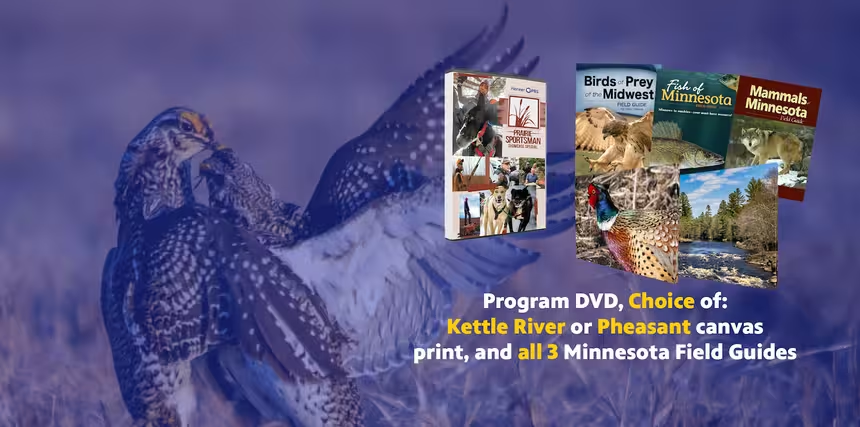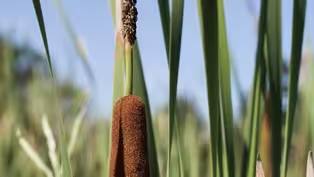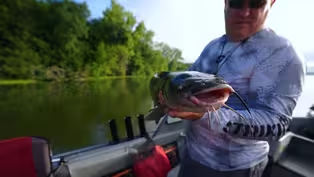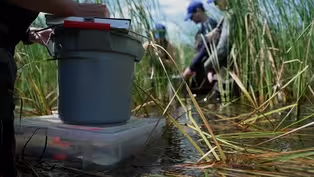Prairie Sportsman
Fast Forage: Catnip
Clip: Season 16 Episode 2 | 2m 17sVideo has Closed Captions
Nicole Zempel shows viewers how to identify wild catnip.
Forager Nicole Zempel shows viewers how to identify wild catnip. She explores what makes it so attractive to felines as well as its medicinal attributes that humans may find useful.
Problems playing video? | Closed Captioning Feedback
Problems playing video? | Closed Captioning Feedback
Prairie Sportsman is a local public television program presented by Pioneer PBS
Production sponsorship is provided by funding from the Environment and Natural Resources Trust Fund, West Central Initiative, Shalom Hill Farm, and members of Pioneer PBS.
Prairie Sportsman
Fast Forage: Catnip
Clip: Season 16 Episode 2 | 2m 17sVideo has Closed Captions
Forager Nicole Zempel shows viewers how to identify wild catnip. She explores what makes it so attractive to felines as well as its medicinal attributes that humans may find useful.
Problems playing video? | Closed Captioning Feedback
How to Watch Prairie Sportsman
Prairie Sportsman is available to stream on pbs.org and the free PBS App, available on iPhone, Apple TV, Android TV, Android smartphones, Amazon Fire TV, Amazon Fire Tablet, Roku, Samsung Smart TV, and Vizio.

Prairie Sportsman Premium Gifts
Do you love the great outdoors, hunting, fishing, hiking and conservation? Consider becoming a friend of Prairie Sportsman to support it and receive gifts with your contribution.Providing Support for PBS.org
Learn Moreabout PBS online sponsorship(upbeat music) (light music) - We are sitting next to, it is a non native plant, it is commonly called catnip, and it is a member of the mint family.
Now, tell tale sign of a mint family plant would be that the stem i actually square, it's not round.
And you can tell that by feeling and also just looking at it.
Also, the leaves of catnip are opposite each other, meaning it's almost kinda like they're shaking hands, and the stem is kind of in between them then, so shaking hands with the stem.
And then, you can see the blooming part is it's kind of a white-ish, white-ish flowers.
Cats love this plant, hence its common name.
My mom called me over the other and said there was a cat rollin' around in their yard in a certain plant and wanted me to come over, sure enough, it was catnip.
So catnip has an effect on cats, there's a chemical in th catnip, and it attracts the cat, and it serves as like a great kind of calming agent.
So you might see a cat roll around in this stuff, and then they just kinda get zoned out after that.
And so, kinda the same affect for humans, maybe to a little lesser extent.
But the plant is edible, so you can, you know, eat the greens, eat the flowers, you can make a tea out of it.
You know if you drink it before it's supposed to promote, just like a good full night sleep, and it's just kind of a body calming plant.
So, again, you can dry that, or have it fresh.
Edible parts, you can throw it in a mixed green salad, and it has kind of a pepper-y minty flavor to it.
Also, if you see this and you know that it's catnip, take a clipping.
If you have a cat, bring it home and they'll thank you for it.
So, catnip, kind of a fun little (light music continues)
Preview: S16 Ep2 | 30s | Learn about successful catfish stocking and researchers study invasive hybrid cattails. (30s)
Video has Closed Captions
Clip: S16 Ep2 | 28m 2s | Learn the history surrounding channel catfish on the Sauk River chain of lakes. (28m 2s)
Video has Closed Captions
Clip: S16 Ep2 | 8m 23s | Invasive hybrid cattails are removed to evaluate impacts on fish habitat. (8m 23s)
Providing Support for PBS.org
Learn Moreabout PBS online sponsorship
- Science and Nature

Explore scientific discoveries on television's most acclaimed science documentary series.

- Science and Nature

Capturing the splendor of the natural world, from the African plains to the Antarctic ice.












Support for PBS provided by:
Prairie Sportsman is a local public television program presented by Pioneer PBS
Production sponsorship is provided by funding from the Environment and Natural Resources Trust Fund, West Central Initiative, Shalom Hill Farm, and members of Pioneer PBS.




